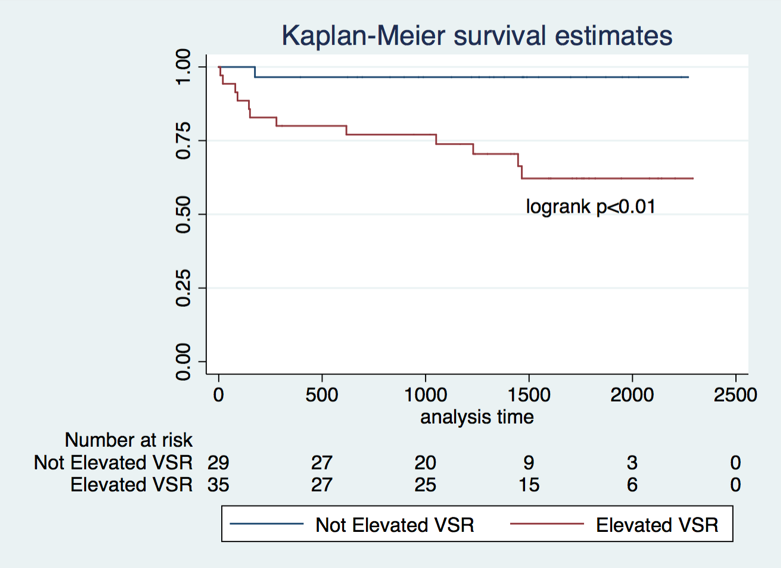Elevated Visceral Adiposity is Associated with Post-Liver Transplant Mortality and Poorly Correlates with BMI in a Prospective Cohort Study
Division of Liver Diseases and Transplantation, Columbia Univerisity Medical Center, New York, NY
Meeting: 2019 American Transplant Congress
Abstract number: 567
Keywords: Adverse effects, Liver transplantation, Mortality, Risk factors
Session Information
Session Name: Concurrent Session: Liver: Recipient Selection
Session Type: Concurrent Session
Date: Tuesday, June 4, 2019
Session Time: 4:30pm-6:00pm
 Presentation Time: 5:06pm-5:18pm
Presentation Time: 5:06pm-5:18pm
Location: Room 312
*Purpose: Obesity is increasingly common in end-stage-liver disease (ESLD). While obesity adversely affects outcomes, whether abnormalities in specific adipose tissue (AT) compartments lead to increased risk is unknown. We hypothesize that altered abdominal AT distribution, specifically increased visceral adiposity, predicts mortality, independent of obesity.
*Methods: In this prospective cohort of adults listed for liver transplant (LT), we quantified visceral (VAT) and subcutaneous adipose tissue (SAT) area at L3 on CT/MRI, adjusted for height. AT redistribution was measured by VAT/SAT ratio (VSR). Elevated VSR was defined as >1.14. Frailty was defined as a Fried Frailty Index >=3. VAT and VSR were evaluated as predictors of post-LT mortality with Kaplan Meier and regression.
*Results: 91 patients were analyzed, mean age 56 years, 75% male, 53% had HCV. Median MELD-Na at listing was 14, 71% underwent LT, 13% died on the waitlist and 22% died post-LT. Median follow-up was 4 years.
VAT/m2correlated with BMI in CTP A (rho=0.65, p<0.01), but not in CTP B (rho=0.39, p<0.01) or CTP C (rho=0.35, p=0.14) cirrhosis. However, VSR poorly correlated with BMI in CTP A (rho=0.45, p=0.06), B (rho=0.12, p=0.46) and C (rho=0.15, p=0.54). Mean VSR was higher in CTP C than CTP A/B (1.60 v 1.17, p=0.05).
Elevated VSR is more common in frail patients (74% v 26%, p<0.01). Adjusting for age, sex, MELD-Na, and CTP Class, VSR (OR 2.02, p=0.22) was not associated with frailty.
BMI did not predict post-LT mortality. Elevated VSR was significantly associated with post-LT mortality (Figure, p<0.01). Adjusting for age, CTP class, MELD-Na, frailty, re-operation, and bile leak, patients with elevated VSR had a 9.27 times higher hazard of dying (p=0.049).
*Conclusions: BMI correlates poorly with VAT and AT redistribution in ESLD and is a poor surrogate for metabolic risk. Elevated VSR, but not BMI, is more common in frail patients and significantly associated with post-LT mortality, independent of liver disease severity and frailty. More accurate measurements of AT depots are required to understand the impact of visceral adiposity on ESLD outcomes.
To cite this abstract in AMA style:
Sharma R, Rosenblatt R, Knotts R, Pisa J, Verna E. Elevated Visceral Adiposity is Associated with Post-Liver Transplant Mortality and Poorly Correlates with BMI in a Prospective Cohort Study [abstract]. Am J Transplant. 2019; 19 (suppl 3). https://atcmeetingabstracts.com/abstract/elevated-visceral-adiposity-is-associated-with-post-liver-transplant-mortality-and-poorly-correlates-with-bmi-in-a-prospective-cohort-study/. Accessed December 26, 2025.« Back to 2019 American Transplant Congress

